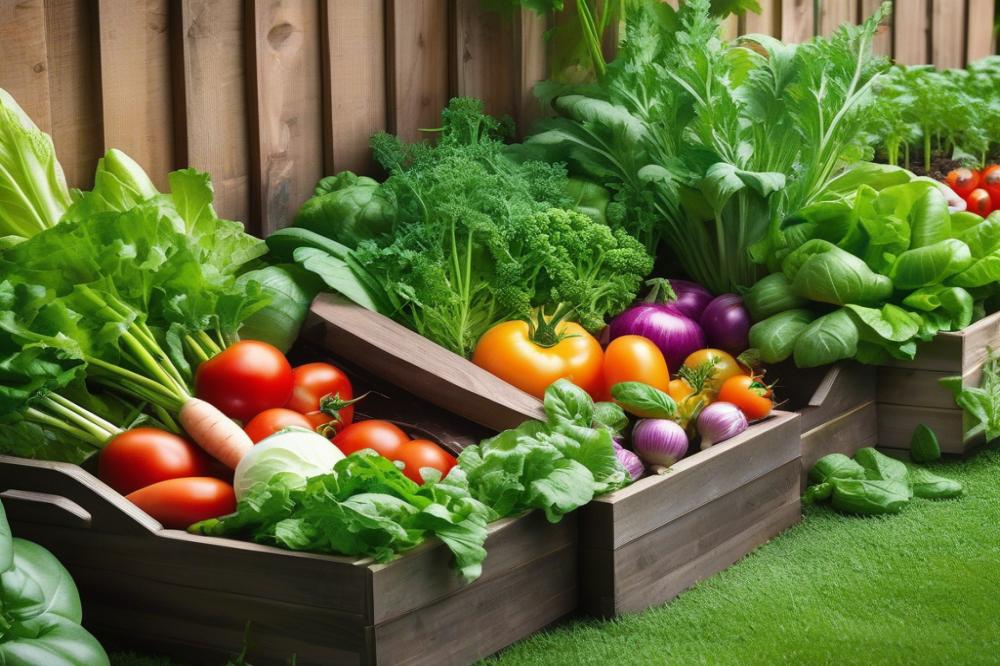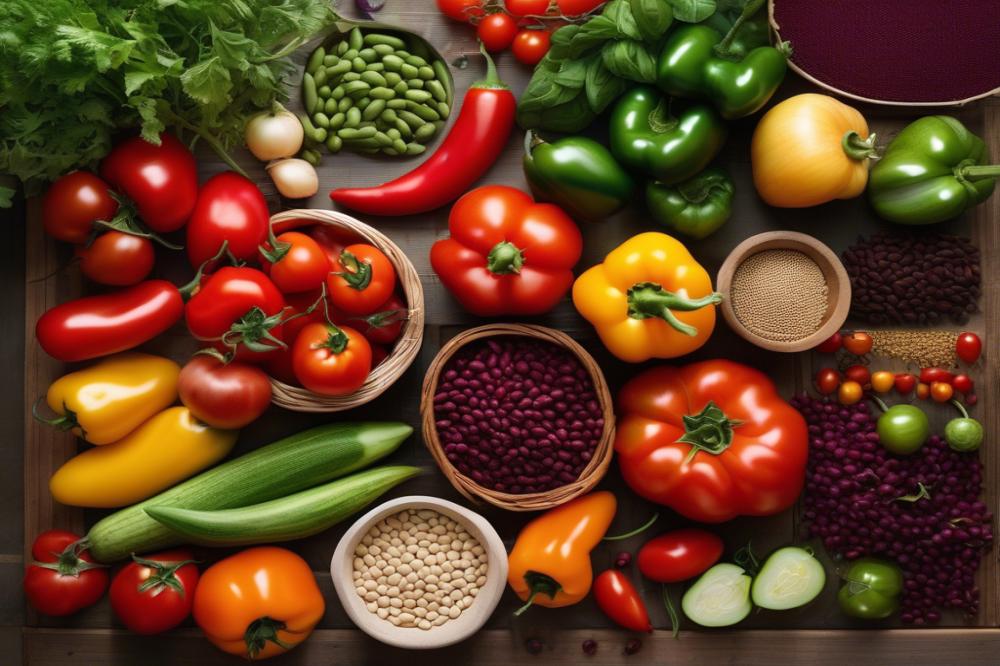Introduction
Kellogg’s Breakfast Tomatoes are a beloved heirloom variety known for their vibrant orange hue and exceptional flavor. These tomatoes bring a unique addition to any garden. They stand out not only for their color but also for their sweet, juicy taste, which appeals to many garden enthusiasts. growing tomatoes can be a rewarding experience, especially when it involves varieties that have a rich history and strong tastes.
Orange tomatoes have gained popularity among gardeners for good reason. Aside from their eye-catching appearance, they are rich in nutrients and contribute to a balanced diet. The distinct flavor of these fruits can enhance salads, sandwiches, and sauces, adding a wonderful brightness to meals. Understanding how to care for heirloom tomatoes helps in achieving a bountiful harvest.
The journey begins with proper soil preparation, seed starting, and planting. Special attention must be given to watering tomatoes adequately and applying necessary pest control methods. As maturity approaches, the excitement for harvesting tomatoes builds. With patience and care, the vibrant orange fruits are ready to be picked. This process blends science and art, making each step essential for success.
Understanding Kellogg’s Breakfast Tomatoes


History and characteristics of the variety
Heirloom varieties have a rich history, and the Kellogg’s Breakfast tomatoes are no exception. Originally developed by a Michigan gardener named Kellogg, this type of tomato has been cherished for generations. The unique taste and vibrant color made them popular in home gardens. Growers appreciate these seeds passed down through the years. planting tomatoes from heirloom varieties connects gardeners to the past and supports biodiversity.
Description of the orange fruit and plant growth habits
The bright orange tomatoes grow to large sizes, often weighing up to a half pound each. Their smooth skin and juicy flesh make them stand out among other types. This tomato plant can reach heights of 6 to 8 feet, needing some support as it grows. Staking or caging the plants is advisable to keep the fruits off the ground. During the growing season, the foliage is lush and green, adding beauty to any garden. Regular tomato care is essential, including pruning for optimal air circulation.
Nutritional benefits and culinary uses
Nutritionally, these fruits are a treasure. They deliver a good amount of vitamins A and C, along with potassium. Enjoy these vibrant fruits in various dishes. Many people love slicing them for fresh salads or making delicious sauces. Roasting these tomatoes enhances their sweetness, providing a wonderful flavor to any meal. For those interested in canning or preserving, orange tomatoes offer great taste year-round. With proper soil preparation and consistent watering, gardeners can expect a rewarding harvest. Pest control matters as well, as it keeps the plants healthy. Seed starting should occur indoors about 6 to 8 weeks before the last frost date. Following good gardening tips will help ensure a bountiful crop.
Preparing to Plant Kellogg’s Breakfast Tomatoes


Soil preparation is essential for healthy growth. Well-prepared soil supports strong root development. It also provides necessary nutrients. Without proper care, plants may struggle to thrive.
Importance of Soil Preparation for Healthy Growth
Healthy soil leads to robust plants. Amending the soil can improve its texture and fertility. For instance, adding organic matter is a great way to enrich the ground. This boosts drainage and provides the nutrition tomatoes need.
Tips for Selecting a Suitable Location in the Garden
Choosing the right spot in your garden is just as important as soil health. Look for an area that gets plenty of sunlight. Tomatoes thrive in full sun for at least six hours each day. Additionally, consider wind exposure. A sheltered location helps prevent damage to plants.
Soil Amendments and pH Levels Suitable for Tomatoes
Tomatoes prefer slightly acidic soil with a pH between 6.0 and 6.8. Testing your soil can show you where it stands. If it’s too acidic or alkaline, amendments can help adjust the level. Compost, lime, or sulfur can be used to change pH. Incorporate these materials well before planting to improve crop yield.
Seed Starting Methods for Optimal Germination
Starting seeds indoors is a common method for many gardeners. Use seed trays filled with quality potting mix. Keep the soil moist but not soggy to encourage germination. Placing trays under grow lights can provide necessary warmth and light. Once seedlings are about two inches tall, it’s time to transplant them into larger pots.
For those without the space or resources for indoor starting, direct sowing is an alternative. Once the ground warms in spring, you can plant seeds directly into the prepared garden beds. Whichever method you choose, careful attention to conditions will lead to successful growth.
Make sure to monitor temperatures regularly. Tomatoes like warm soil, so wait to plant until after the last frost. This ensures a higher chance of success. Plant care becomes easier with established seedlings. Watering tomatoes consistently helps keep plants healthy as they grow.
Planting Kellogg’s Breakfast Tomatoes


Best Time for Planting in Various Climates
Spring is the ideal season to start planting tomatoes. In warmer regions, aim for late March to early April. If you live in a cooler climate, wait until the last frost has passed, typically in late May. Monitor the soil temperature. It should be around 60°F (15°C) for optimal growth. Early planting can lead to stunted growth or disease.
Transplanting Seedlings into the Garden
Transplanting should happen when the seedlings are about six to eight inches tall. Choose a cloudy day or late afternoon to minimize shock. If plants look weak, avoid direct sunlight. Carefully remove seedlings from their pots, taking care not to damage roots. Dig a hole deep enough to plant the seedling up to its first set of leaves.
Spacing and Planting Depth Considerations
Space your plants about 18 to 24 inches apart. This distance allows for air circulation, reducing disease risk. Planting depth matters, too. The deeper you plant, the better the root system. Tomatoes can grow roots along their buried stems. Use this to your advantage for strong plants.
Garden Layout Tips for Heirloom Varieties
Heirloom varieties like orange tomatoes thrive with careful planning. Create rows with enough space to avoid overcrowding. Consider companion planting to boost health and flavor. Basil, for example, pairs well with tomatoes and helps deter pests. Keep stakes or cages handy for support as plants grow. This support prevents breakage during storms and optimizes exposure to sunlight. Always follow good tomato care practices to maximize yields. Monitor for pests regularly and apply pest control methods as needed. Watering tomatoes in the morning keeps leaves dry and reduces disease risk.
Caring for Kellogg’s Breakfast Tomatoes
Watering tomatoes: frequency and best practices
Tomatoes thrive with consistent watering. Water the plants deeply about once or twice a week, depending on the weather. Keeping the soil moist is crucial, but avoid waterlogging. Early morning is the best time to water, as this reduces evaporation. Check the top inch of soil; if it feels dry, it’s time to water again. Consider using a soaker hose to keep moisture around the roots while preventing wet leaves, which can lead to disease.
Tomato care: fertilization and maintenance
Fertilizing plays a key role in healthy growth. Use a balanced fertilizer that’s rich in nitrogen, phosphorus, and potassium. Apply fertilizer when planting and then every few weeks during the growing season. Organic options such as compost or well-rotted manure can also be beneficial. Furthermore, regular maintenance like weeding helps reduce competition for nutrients. Keep an eye on the soil pH, aiming for a range between 6.0 and 6.8 for optimal growth.
Pest control strategies specific to tomatoes
Tomatoes can attract various pests that may hinder growth. Aphids, tomato hornworms, and whiteflies are common challenges. Check the plants frequently for signs of infestation. Removing pests by hand is often effective for small problems. Additionally, consider using insecticidal soap as a safe alternative for controlling larger outbreaks. Planting marigolds nearby can naturally deter some pests.
The importance of staking and pruning for optimal yield
Staking your plants supports healthy growth and prevents branches from breaking under the weight of ripe fruit. Use stakes or cages as plants grow taller. Pruning is equally important, as it removes suckers that compete for energy. Focus on trimming leaves that cover ripe tomatoes as well to promote better air circulation. This practice can lead to larger orange tomatoes at harvest time. Healthy plants yield better, so these steps are crucial for a productive garden.
Harvesting Kellogg’s Breakfast Tomatoes
Signs of Ripeness for harvesting tomatoes
Observing tomatoes closely is essential for knowing when to pick. For Kellogg’s Breakfast, look for a vibrant orange hue, signaling the fruit’s readiness. A slight yield to gentle pressure is another sign. Usually, ripe tomatoes tend to shine and have a smooth texture. The leaves around the fruit may start to yellow. This change in foliage indicates that harvesting tomatoes should happen soon. If any tomatoes begin to wrinkle, they are past their prime.
Best Practices for Picking and Storing Orange Tomatoes
Picking tomatoes requires gentle handling to avoid bruising. Use a pair of garden shears or scissors for the cleanest cut. Grasp the tomato firmly but carefully, and cut the stem above the fruit. Storing freshly harvested fruit is critical for maintaining flavor. Place them in a cool, dry area, away from direct sunlight. Ideally, use a flat surface to prevent stacking, which can lead to bruising. If tomatoes are not fully ripe, letting them rest indoors can help them reach perfect ripeness.
Using Harvested Tomatoes in Recipes and Preservation Methods
Once harvested, these orange tomatoes can shine in various dishes. They are perfect for salads, sauces, and sandwiches. Roasting them can enhance their sweetness, offering a delicious side dish. Preserving tomatoes further extends their usability. Canning or drying are popular techniques. Chopping and freezing them is simple as well. Using heirloom varieties can add depth to your cooking. Remember to savor the unique taste of homegrown tomatoes; they truly elevate any meal. Always follow proper procedures for any preservation methods to ensure long-lasting flavor.
Embracing the Joy of Growing heirloom tomatoes
Growing heirloom varieties like Kellogg’s Breakfast Tomatoes brings a special charm to any garden. They not only yield vibrant orange fruits but also connect you to a rich history of gardening. These tomatoes are known for their sweet flavor and unique texture, making them a delightful addition to salads, sandwiches, and sauces. Embracing this type of gardening can deepen your appreciation for nature and the food you eat.
Consider taking the leap into the world of heirloom gardening. Whatever your skill level, cultivating these seeds can be rewarding. Watching them flourish under your care brings a sense of achievement that cannot be replicated. Remember, good soil, sunlight, and regular watering are keys to your success. Each ripe fruit you harvest will show you the fruits of your labor.
When growing tomatoes, keep a few simple tips in mind for the best results. Choose a sunny spot in your yard or garden because tomatoes thrive in warmth. Regularly check for pests and illnesses to keep your plants healthy. Mulching helps retain moisture and suppress weeds, which can compete for nutrients. Lastly, be patient; tomatoes may take time to ripen, but that moment will be worth the wait!
As you embark on your journey of planting tomatoes, remember that every gardener faces challenges. Embrace the learning process. Celebrate your personal growth alongside your plants. With time and care, you will enjoy the fruits of your labor during the harvest season. Your commitment to growing these delicious treasures will provide both satisfaction and sustenance.



